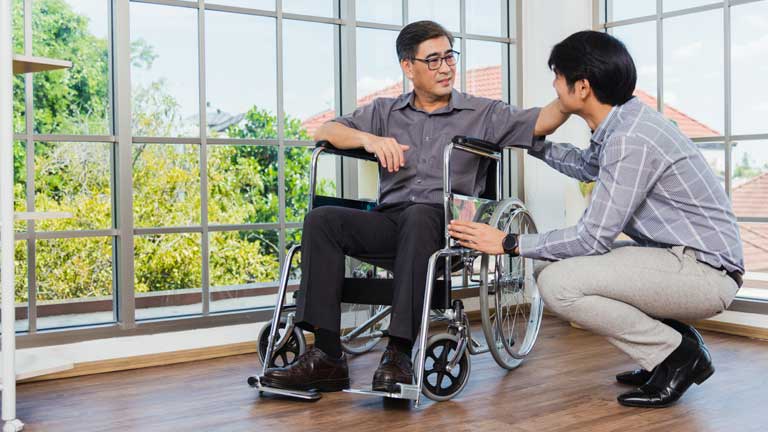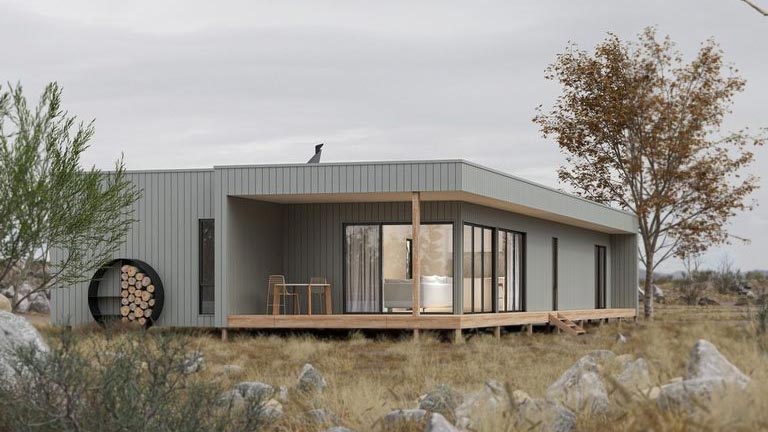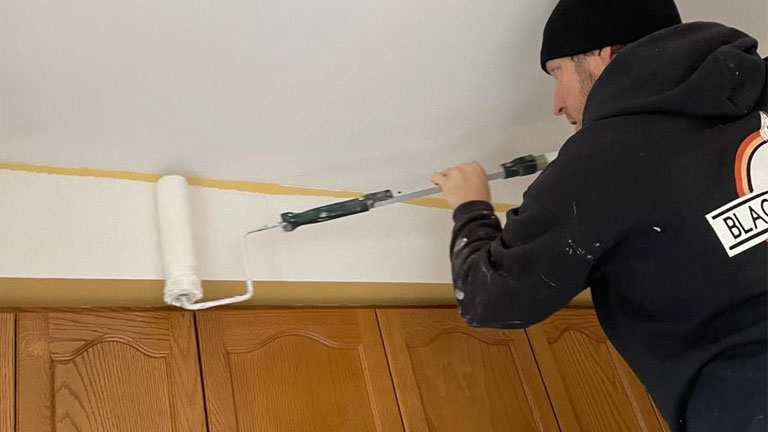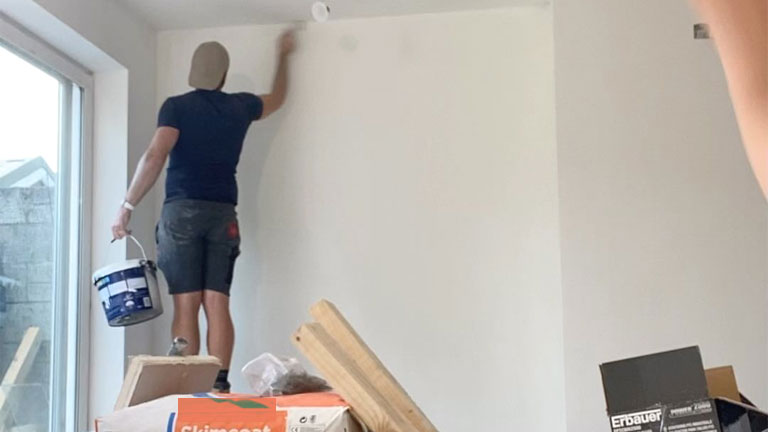
Nowadays, many homeowners are considering modifying their homes to be wheelchair-friendly. Or simply to help family members with disabilities stay mobile. There are various reasons for this.
One is obviously if a house already has a disabled person due to an injury, accident, or illness. Another reason is that many homeowners are still planning for their old age.
Even though wheelchair usage for some people maybe only for a few months, the modifications can be beneficial in their old age. This means that they can prolong their time in their existing house rather than shifting to another home.
However, if the wheelchair user is permanent or long-term, physical home improvements are necessary to make life easier for homeowners and people with disabilities.
What makes a home accessible for the disabled?
Want to make your home disabled accessible? For this, you need to eliminate certain barriers. And, make daily necessities and routine movements more accessible. It may involve a few rooms or the whole house.
There are a few DIY projects to turn your home all accessible. Or sometimes you may need major renovations to make your home livable to individuals with disabilities.
For instance, if you like spending time outdoors, you can consider adding several accessible trails around the exterior. This means that you have to make home improvements both indoors and outdoors. It will help homeowners better understand what it takes to make certain improvements to a wheelchair-friendly home.
How much does it cost to make a home disabled accessible?
The cost of home improvements for disabled accessible dwellings depends on the current state of a house. You may have covered all the major points already, or you want to renovate specific areas in your abode.
No matter what’s your preference, you need to make a quick inspection to make sure that:
- All door frames are wide enough.
- The front door is wheelchair accessible.
- The washroom is comfortable and accessible.
- Flooring is not obstructive.
- Kitchen spaces are reachable.
These are some major improvements that you need to make your home accessible for a person with disabilities. And, the cost of home improvement further depends on the state of your home.
How to make doorways accessible?
Here are some simple ways to make doorways accessible:
- Install an accessible ramp at the doorstep: If there are stairs, there should be a ramp and railing on either side.
- Remove doorsteps: If possible, you need to remove all the doorsteps to ensure the wheelchair remains unobstructed. Mainly, take care of the uneven part of the floor.
- Broaden the door frames: It is important to ensure that your wheelchair is easy to fit through each door within your home. The standard wheelchairs are around 25-inch wide. So, for easy access, the doors need to be around 35-inches wide. If the door is quite narrow, you have to make some renovations. If you need to consider something more than the removal of door frames, it is best to call a renovator.
- Add a lower peephole: If you like to open the door before peeping who’s outside, consider adding a lower peephole for the person with disabilities too. It is a good idea to place it at their eye level when sitting in a wheelchair. For better security and peace of mind, you can install a smart Wi-Fi integrated video doorbell.
Type of disabled-friendly flooring
For navigating home in a wheelchair with no issues, it is best to consider some specific flooring options that may not wear off very fast.
Here are a few major disabled-friendly flooring materials:
- Laminate flooring: Laminate is a beautiful material to consider due to its durability. Even the scratches are easy to remove from this material with the best cleaning products.
- Hardwood flooring: This flooring is not just aesthetic, but also very durable. So, it will last for many years to come.
- Ceramic Tiles: It is a great flooring for bathrooms and kitchens due to its water resistance. However, if you find the right pattern or color, you can even install them in your bedrooms. But don’t choose the larger ones because they can get damaged easily
- Vinyl flooring: One more water-resistant and durable flooring option is vinyl flooring. It is very easy to install, just like a laminate.
How to make the bathroom accessible?
Well, bathrooms are not often created for wheelchair accessibility. But if you want it to be wheelchair friendly, you need to consult a renovation firm for its complete design and layout makeover.
Some major parts to consider for creating a wheelchair accessible bathroom include:
- Enough space to easily turn: a bathroom must have an appropriate space of at least 1500 mm to enable a wheelchair to easily turn 360-degree without any obstruction.
- Rails near the toilet: It is important to install at least three railings for support while sitting and getting up.
- Space in the toilet bowl’s front: there must be around of space in front of your toilet bowl.
- Rails around the bathing area: Just like your toilet, you need strong rails to hold around the bathing area. So, consider the installation of rails to ensure better accessibility.
- Rails around bathtub and shower area.
How to make the kitchen accessible?
Like the bathroom, even your kitchen needs to be wheelchair accessible. Here are a few ways to help you make your kitchen more accessible to disabled people:
- Low work surfaces: The counter space, like the kitchen sinks, need to be easy to use from where you sit. The height of the floor needs to be around 600 mm. However, it is customizable as per the needs of the individuals.
- Turning space: There must be a proper moving space of around 1500 mm to turn with ease. Just like the bathroom, the kitchen also needs to be quite spacious for easy navigation.
- Base storage units: It can be difficult for people with disabilities to reach storage units or cupboards that are high. So, the storage units or cabinets must be at the height at which a wheelchair-bound person can reach easily.
- Place appliances low: For easy access to hob, oven, dishwasher, washing machine, etc., disabled people need to choose appliances with side opening and ease of operation.
- Moreover, switches and sockets must be within arm’s reach. So, install these at the right height.
Ways to remodel your home for accessibility
Here are some simple and easy ways to remodel your house for accessibility”
1. Replace your stairs with ramps
The stairs are a major problem for people with disabilities. Not only for wheelchair-bound people, but it’s also a big issue for anyone facing mobility issues. They also tend to pop up in almost any desired architectural style. Even a single-story house may have at least around 1-2 steps to lead you to the doorway.
There are various types of ramps available on the market. But if you need to consider collapsible ramps for better storage. The portable ramps mean to easily turn the steps into quickly accessible for disabled people.
Another type of ramp is the threshold ramp for an easier entryway for people who use a wheelchair. So, you need to choose the right ramp that offers better reliability from room to room. Hence, it’s great for people with wheelchairs, walkers, power chairs, and mobility aids.
2. Install a stairlift
Do you and your loved ones find stairs quite cumbersome? If so, you need to install a stairlift. The stairlifts are available in a wide range of styles. These are also easy to install as a great permanent home improvement feature. It can even be one of the on-the-go options, like a portable stair climber.
The stairlifts are perfect for front yard steps or multi-level homes and offer easy accessibility for people with limited mobility. These are also a safer alternative to staircases within your house.
3. Install an elevator
One amazing alternative to a stairlift is an elevator for people with disabilities. An elevator is an elegant, reliable, swift, and safe home improvement feature. You can also consider equipping them with existing architecture.
If you have an elevator within your home, it can enhance the property’s value to higher than its actual cost of installation. However, the best thing about this investment is better accessibility to the disabled.
For those who want to add a quick installation into their home, consider adding freestanding home elevators within a few days.
4. Update your toilet
A toilet is one area of your bathroom that may become difficult to access for people with disabilities. You can install handrails within the interior to eliminate the needs of the users. The handrails offer the much-needed support to balance an individual as they stand up and sit down from the toilet. You also need to install a safety frame around the toilet to increase the quality of life and the user’s comfort.
5. Add handrails in other important areas of your home
For people with bad balancing, low mobility, prone to falls, or those with difficulty getting out of beds, chairs, or bathrooms, handrail installation is a good option. So, whenever you want to move, simply grab the rails to decrease the risk of falls or injury. It also helps users lift from rested or seated positions. Hence, they increase independence and peace of mind.
6. Eliminate bathing barriers
For most people with disabilities, a bathroom means various obstacles. A slick tile is very dangerous when it’s soapy and wet. The countertops and tubs are not forgiving as well. If we talk specifically about a tub, it makes coming out and getting it difficult due to its big sides. So, you need to create a physical barrier for entry.
Fortunately, the installation of step-in tubs is great to get rid of that barrier. Hence, it enables users to easily get in/out of a tub without straddling its sides. It creates quite a creative and safer experience while decreasing the risk of falls.
Furthermore, you have to create an easier entry while lining the tub with a surface that’s resistant to slips.
7. Ditch doorknobs
The doorknobs of different styles are also quite problematic for people with limited mobility. It is because if an individual falls, doorknobs can hit their head and cause more injury.
Therefore, it is best to replace the doorknobs with press lever handles, pull/push bars, or automatic doors. All these features are best to improve home accessibility to a great extent.
You need to hire professional contractors for installing automatic doors for a completely hands-free experience. All these doors are very easy to install both indoors and outdoors.
Hence, it enables the users to easily open any doorway just at the push of a button.
The automatic doors are easy to install and are perfect for any sort of door type. It can be customized to get activated from various devices, like wall push pads, wheelchair control switches, home control systems, etc.
Moreover, automatic doors won’t override manual operations. It means you can use the door manually too, whenever you want.
8. Rearrange your furniture
After inspecting the layout of your house, you can start thinking about rearranging your furniture. Is your furniture apt for people with low mobility issues? Or those who are wheelchair-bound? Consider these things as well, and further arrange the furniture to eliminate any narrow passageways or sharp turns.
You need to make everyday items, like bookshelves, chairs, etc. very easy to access. It may even mean moving certain items to lower shelves for people using various mobility devices.
9. Use wheelchair-friendly surfaces
As mentioned earlier, surfaces can become quite slick. Therefore, consider adding slick-resistant rugs, hardwood flooring, and rough grout in the homes of people with disabilities. Also, replace the rugs that are easy to slip or slide.
So, it is best to install mats or rugs with better grip. Make sure that all the surfaces within your house don’t lead to slipping or tripping threats.
10. Simplify pool entry
Swimming pools are great fun. But these are hard to use by people with disabilities. Even entry stairs and ladders are of no use to people with low mobility. These features may also pose some safety threats when they are not adapted.
However, pools provide you with better opportunities to take therapy and do proper exercise for people with disabilities.
Therefore, you need to update your pool for ADA compliance. After all, it is a major part to play an important role within a handicap-accessible home. You can consider adding a variety of pool lifts for safer aquatic entry for mobility-challenged individuals.
They even support various weight capacities, which are suitable for when you are in the pool or outside the pool.
Wrapping up
We understand that it’s very difficult for people with disabilities to move around freely, even in their homes. With a few home improvements, you can create a convenient and simply accessible home for mobility-challenged individuals.




